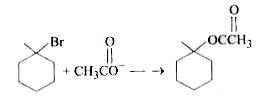A
B
C
D
Text Solution
AI Generated Solution
The correct Answer is:
|
Topper's Solved these Questions
EQUILIBRIUM
AAKASH INSTITUTE ENGLISH|Exercise ASSIGNMENT (SECTION -A)|50 VideosView PlaylistEQUILIBRIUM
AAKASH INSTITUTE ENGLISH|Exercise ASSIGNMENT (SECTION -B)|35 VideosView PlaylistEQUILIBRIUM
AAKASH INSTITUTE ENGLISH|Exercise TRY YOURSELF|52 VideosView PlaylistENVIRONMENTAL CHEMISTRY
AAKASH INSTITUTE ENGLISH|Exercise ASSIGNMENT (SECTION-D) (Assertion - Reason Type Questions)|4 VideosView PlaylistGENERAL PRINCIPLES AND PROCESSES OF ISOLATION OF ELEMENTS
AAKASH INSTITUTE ENGLISH|Exercise Assignment (Section-D) Assertion-Reason Type Question|15 VideosView Playlist
Similar Questions
Explore conceptually related problems
Knowledge Check
Similar Questions
Explore conceptually related problems
AAKASH INSTITUTE ENGLISH-EQUILIBRIUM-EXERCISE
- For the system 3A + 2BhArr C, the expression for equilibrium constant ...
02:23
|
Play - A state of equilibrium is reached when
04:03
|
Play - In which of the following does the reaction go almost to completion ?
05:18
|
Playing Now - K(p)//K(c) for the reaction CO(g)+1/2 O(2)(g) hArr CO(2)(g) is
01:03
|
Play - For the reaction A+3B hArr 2C+D initial mole of A is twice that of B ....
04:56
|
Play - The equilibrium A(g) +4B(g) hArr AB4(g) is attained by mixing equal mo...
01:29
|
Play - The numerical value of equilibrium constant depends on
01:24
|
Play - The favourable conditions for melting of ice is
02:20
|
Play - The oxidation of SO(2) by O(2) to SO(3) is an exothermic process. The ...
02:55
|
Play - K(c) for A+BhArrC+D is 10 at 25^(@)C. If a container contains 1, 2, 3,...
02:20
|
Play - For the reaction CO(g) +2H2(g) hArr CH3OH(g) . If active mass of CO is...
01:20
|
Play - The equilibrium constant for the reaction H(2)(g)+I(2)(g)hArr 2HI(g) i...
05:32
|
Play - For the reaction is equilibrium : 2NOBr((g))hArr2NO((g))+Br(2(g)) ...
02:42
|
Play - When 20g of CaCO3 is put into a 11.45L flask and heated to 800^@C ,...
05:04
|
Play - At temperature T K PCl5 is 50% dissociated at an equilibrium pressure ...
06:51
|
Play - For the equilibrium CH3CH2CH2CH(3(g))hArr CH3-underset("iso-butane")un...
02:00
|
Play - 2H2(g) +CO(g) hArr CH3OH(g) , DeltaH=-92.2 kJ. Which of the following ...
01:55
|
Play - For a reaction, A(g) to A(l) , DeltaH=-3RT. The correct statement fo...
02:18
|
Play - Ice and water are placed in a closed container at a pressure of 1 atm ...
03:45
|
Play - In the system Fe(OH)(3(s))hArr Fe((aq)^(3+) +3OH((aq))^- , decreasing ...
04:19
|
Play





